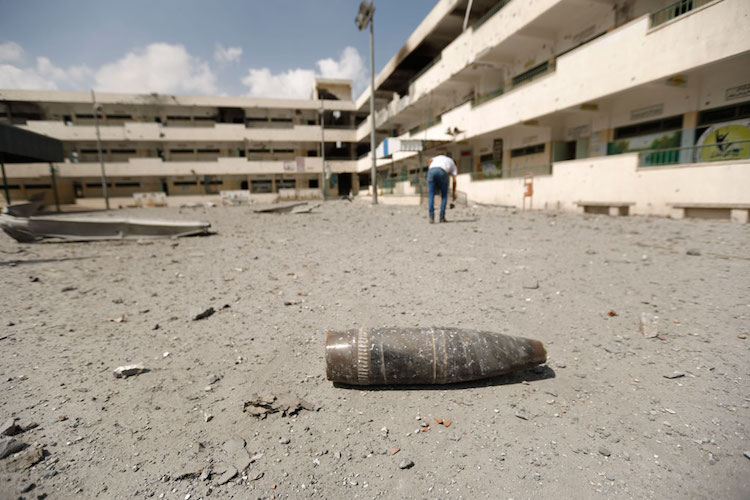By Bernhard Schell
AMMAN (IDN) – Two years after the Gaza conflict, paucity of sufficient funds is hampering a speedy clearance of Explosive Remnants of War (ERW) that pose a serious threat to the life and physical integrity of the population in the tiny self-governing Palestinian territory.
During the 2014 conflict, Israel launched more than 6,000 airstrikes and fired nearly 50,000 tank and artillery shells in the 51-day operation in Gaza, killing 1,462 Palestinian civilians, a third of them children.
The United Nations Independent Commission of Inquiry’s report on Gaza conflict, published on June 22, 2015, found that Palestinian armed groups fired 4,881 rockets and 1,753 mortars towards Israel in July and August 2014, killing 6 civilians and injuring at least 1,600.
“The full extent of contamination by ERW in Gaza is unknown,” said the Office for the Coordination of Humanitarian Affairs (OCHA) in a news release on August 10.
Although a large number of ERW was cleared shortly after the 2014 conflict by both official and unofficial bodies, suspected remnants remain hidden throughout Gaza, either among the rubble of destroyed structures or buried below the surface, OCHA added.
Since the end of hostilities, 17 people have been killed and 100 more injured by ERW, including 46 children.
According to OCHA, the UN Mine Action Service (UNMAS) has cleared more than 40 cases of suspected large aerial bombs posing a risk to communities and impeding reconstruction and development efforts.
The OCHA news release said: “Of the 131 locations identified since 2014 where this type of aerial bomb is suspected, 87 sites remain to be cleared. Each case can take weeks to conclude and requires a costly combination of workers and heavy machinery. The availability of funding is therefore a limiting factor to the speedy clearance of ERW that remain buried.”
Although the responsibility for the clearance of ERW lies with the Gaza police, says OCHA, the impact of large aerial bombs cannot be properly managed in Gaza due to a lack of the technical skills required to render such items safe.
UNMAS was therefore requested to assist with the clearance of aerial bombs. In this case, the bomb was safely removed and destroyed.
As part of a sustainable strategy to mitigate risks, UNMAS has focused on protection measures to include removing suspected ERW and providing a holistic risk mitigation framework in support of reconstruction and development efforts.
These measures comprised four mutually-reinforcing components, beginning with site-specific ERW risk assessments to determine the hazards and the level of risk.
“Based on these assessments, ERW risk awareness training is then provided to construction workers. UNMAS monitors ongoing work activities to ensure compliance with recommended measures.
“The final component is responsive technical support from an Explosive Ordnance Disposal (EOD) expert whenever an item is suspected to be an ERW. These activities are complemented by providing ERW risk education to communities at risk in order to reduce the number of accidents,” OCHA explained in a statement.
Following the end of hostilities in 2014, UNMAS supported the UN Development Programme’s (UNDP) Rubble Removal project for the safe extraction and processing of more than one million tons of debris.
By the end of July 2016, UNMAS had provided 81 risk assessments to support UNDP-coordinated reconstruction efforts by surveying 405,000m2 of land, including 41 km of roadways.
Additionally, ERW risk awareness training has been provided to 211 workers with risk education sessions reaching nearly 39,000 people in communities at risk, including boys and girls.
In parallel, UNMAS continued to provide the Relief and Works Agency for Palestine Refugees in the Near East (UNRWA), other UN agencies and non-governmental partners with leadership and expert technical expertise in managing explosive hazards while developing contingency plans to strengthen emergency preparedness.
According to OCHA, “the ERW risk mitigation measures deployed in Gaza constitute a responsible and sustainable response to identify and remove ERW, and ultimately protect the lives of civilians.” [IDN-InDepthNews – 11 August 2016]
Photo: A munitions shell lies on the ground at Sobhi Abu Karsh Basic School in the Sheja’eyya neighbourhood of Gaza City. Credit: UNICEF/Eyad El Baba
IDN is flagship agency of the International Press Syndicate.

